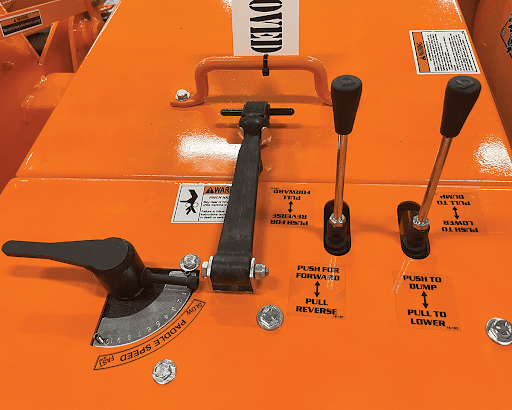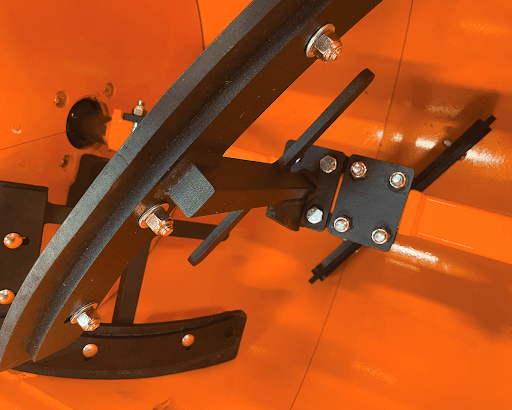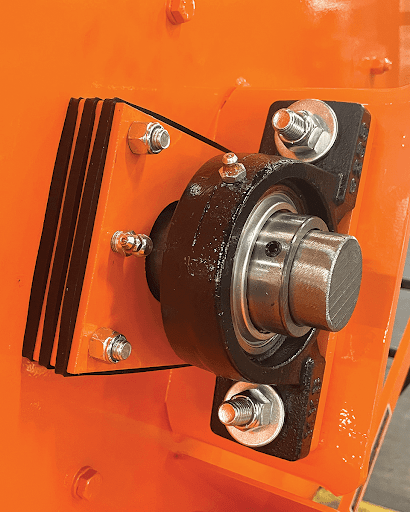What Should A Mason Contractor Look For In A Mixer?
Words: Steve Wheeler
Words and Photos: Steve Wheeler, Sales Manager at EZG Manufacturing
A contractor should look for
quality and ergonomics for the price he or she is paying. Consider this: only
30% of the costs of a piece of equipment is incurred the day it is purchased
while 70% is incurred during everyday use combined with its lifespan. Here are
some important things to consider when purchasing a mixer:
- The thickness of the drum: Mixers that are built with thin gage steel are alright for the handyman who only uses a mixer an hour or two a week. However, for contractors that mix every day, if the drum is built of thin gage steel, the paddles can wear holes in the drum within a few months. This leaves the contractor no choice but to weld patches on the drum to keep mortar in during the mixing process, or to replace the mixer with a new one.
- The quality of the paddle blades: Low quality rubber is often used on the paddle blades of low priced mixers. These blades are subject to wear out in as little as a month, leaving the rubber blades needing to be replaced. If the operator continues to use the mixer without replacing them, after each use, the mixer operator is required to manually clean the thick layer of mortar the paddles leave on the inside of the drum due to the faulty rubber blades. In doing so, the operator will often damage the drum by using a hammer to clean it. The thinner the drum, the quicker the damage will occur.
- The way the operator is required to start the engine: If the mixer is equipped with electric start, the operator doesn’t have to pull a cord each time to start the engine. Without the electric start option, every time the operator pulls on cord to start the mixer, it is one pull closer to shutting the job down as the pull cord will eventually wear and break apart leaving the recoil needing rebuilt or replaced. When this happens, masons are often standing around waiting on mortar while the operator works on the mixer. With electric start mixers, the only time the pull cord is ever used is when the operator accidentally leaves the key on and the battery goes dead. In that case, the operator can start the mixer by pulling the cord and the battery will be recharged while the mixer is running. Then, it can be started with a key the next time. This avoids constantly pulling on the cord to start the engine.
 Detail of Mixer Control Panel, Forward / Reverse Adjustable Paddle Speed with Hydraulic Lift / Lower and Dump Action
Detail of Mixer Control Panel, Forward / Reverse Adjustable Paddle Speed with Hydraulic Lift / Lower and Dump Action- Reversible Paddles: Even the best operators will sometimes forget to add the right amount of water into the mix plugging the mixer during the mixing process. Without the reverse option, when a mixer plugs, it has to be shut down and dug out while masons stand and wait on mortar. A high price to pay for not having a reversible mixer on the jobsite. The mixer must be hydraulic driven in order for it to reverse the paddles while easily unplugging it to finish mixing the batch of mortar or grout. Properly built in cross port reliefs into the hydraulic system insures there are no pins to shear or damage to the mixer during a plug.
 Detail of Mixer Drum Interior with Reversible / Replaceable Rubber Paddle Design
Detail of Mixer Drum Interior with Reversible / Replaceable Rubber Paddle Design- Will the mixer mix mortar and grout or mortar only? Properly designed hydraulic mixers can mix grout as well as mortar for years as the rubber blades will flex to bypass the gravel and allow the concrete or grout to be mixed. A huge advantage when small amounts of grout or concrete is needed to be mixed on the jobsite.
- The height the operator is required to load the mixer: We build the Mud Hog mixers so they load at the operator’s waist instead of the chest like most mixers are designed to load. With the low load and high dump feature, the cylinders on the mixer lifts the weight instead of the operator straining his or her back lifting materials high to load. It makes a world of difference over the course of a day of mixing mortar or grout.
What advice
can you give a mason to extend the life of his mixer?
At
the end of each mixing operation, the mixer must be properly cleaned. At least
once a week, all grease fitting locations need to be greased. As long as the
operator keeps enough grease in the bearing seals, the mortar stays out.
We
build the Mud Hog mixers with the seals separated from the bearings so when the
seals do wear out, mortar or grout does not go directly into the bearings
ruining bearings and shaft. Therefore, when the seals do wear out, they must be
replaced but not the bearings and shaft. We also put the bearings and seals on
the outside of the drums so they can be replaced without removing the drum to
replace them.
 Placing distance between the seals and bearings extends the life of the mixer and makes maintaining the mixer easier.
Placing distance between the seals and bearings extends the life of the mixer and makes maintaining the mixer easier.Even
with proper maintenance, all mixers that are used daily, work in difficult
conditions. Therefore, when purchasing a mixer, it is critical to choose a
mixer that can stand up to the elements it will be facing each day.
What do you see for the future of jobsite mixers?
I believe all contractors are looking for a way to make their jobs run smoother and faster. With labor being a contractor’s biggest expense, I believe more and more contractors will continue to go to mixing with these types of mixers as they are built to pay for themselves time and time again due to ease of use and durability.
About The Author
Steve Wheeler is an industry veteran who is personally and professionally committed to innovation. He provides thorough, in-field training that maximizes safety and efficiency for his clients and, more importantly, gives him the opportunity to receive feedback. This feedback has helped him to offer prominent influence on the development of advanced masonry products that contribute to the entire industry. Steve attends and demonstrates at trade shows all over the country, including World of Concrete, which he has attended every year since 2012.